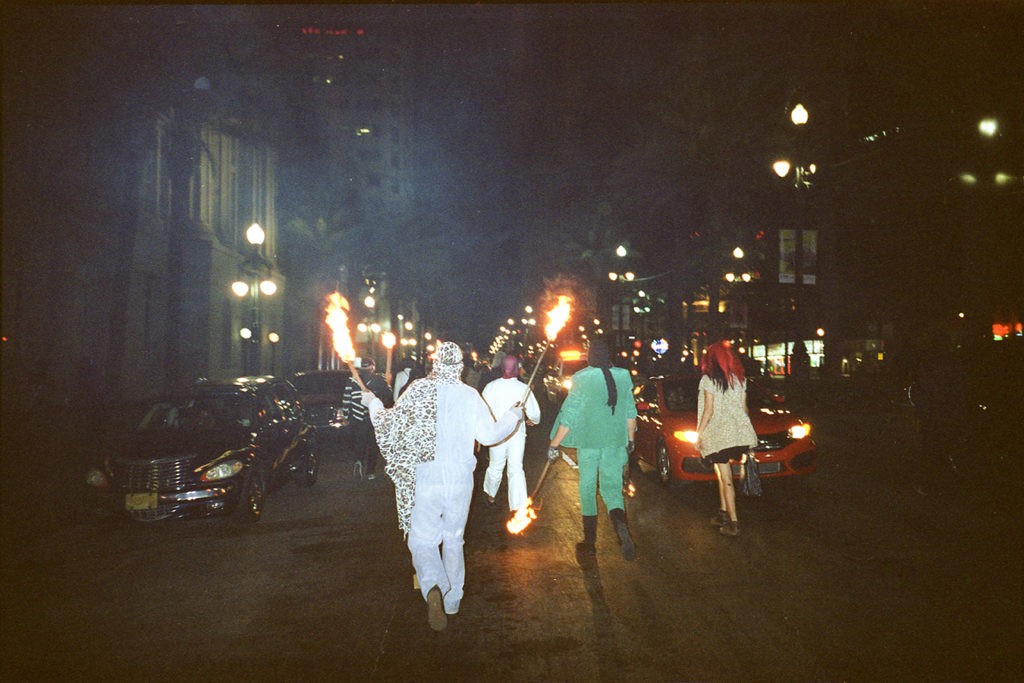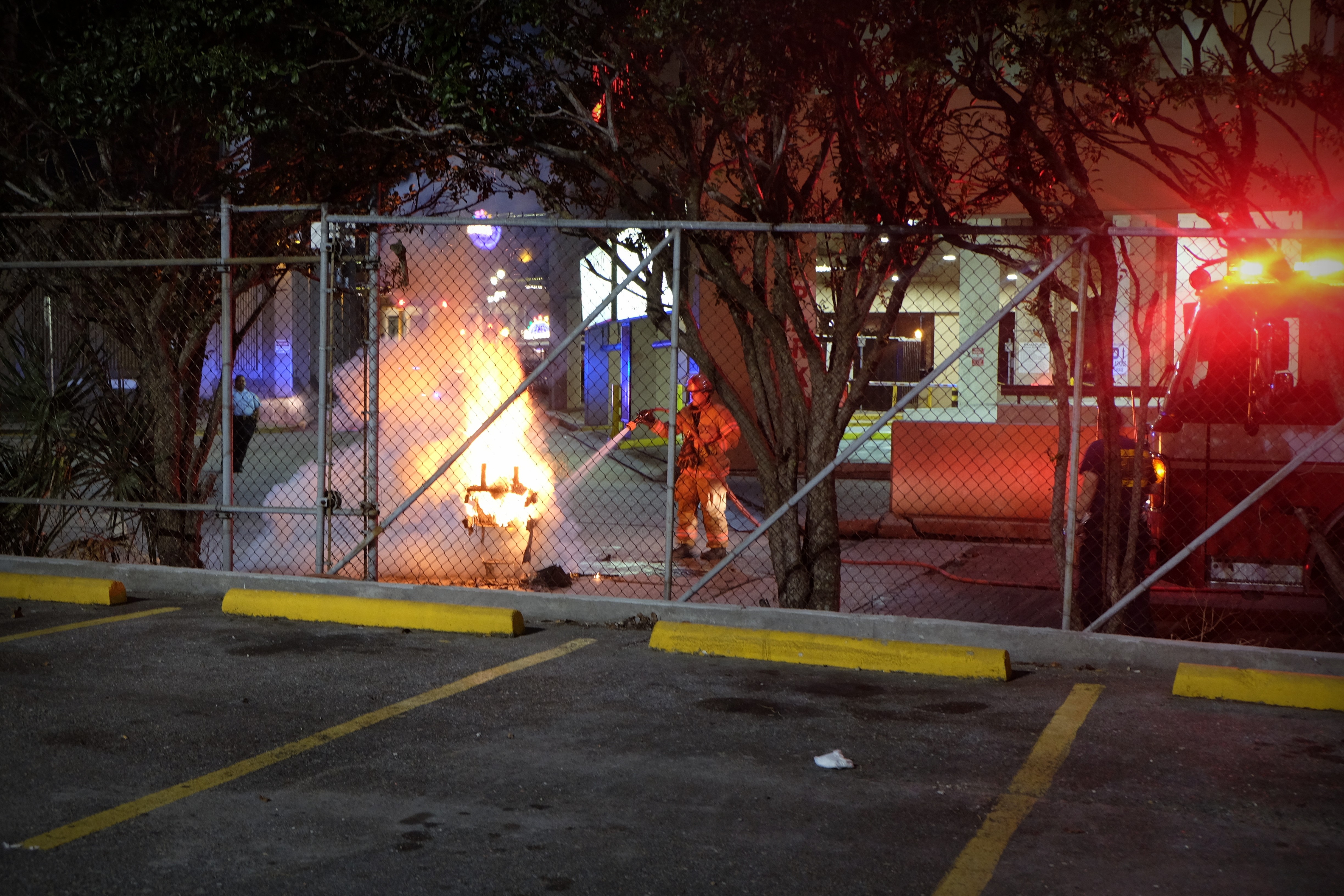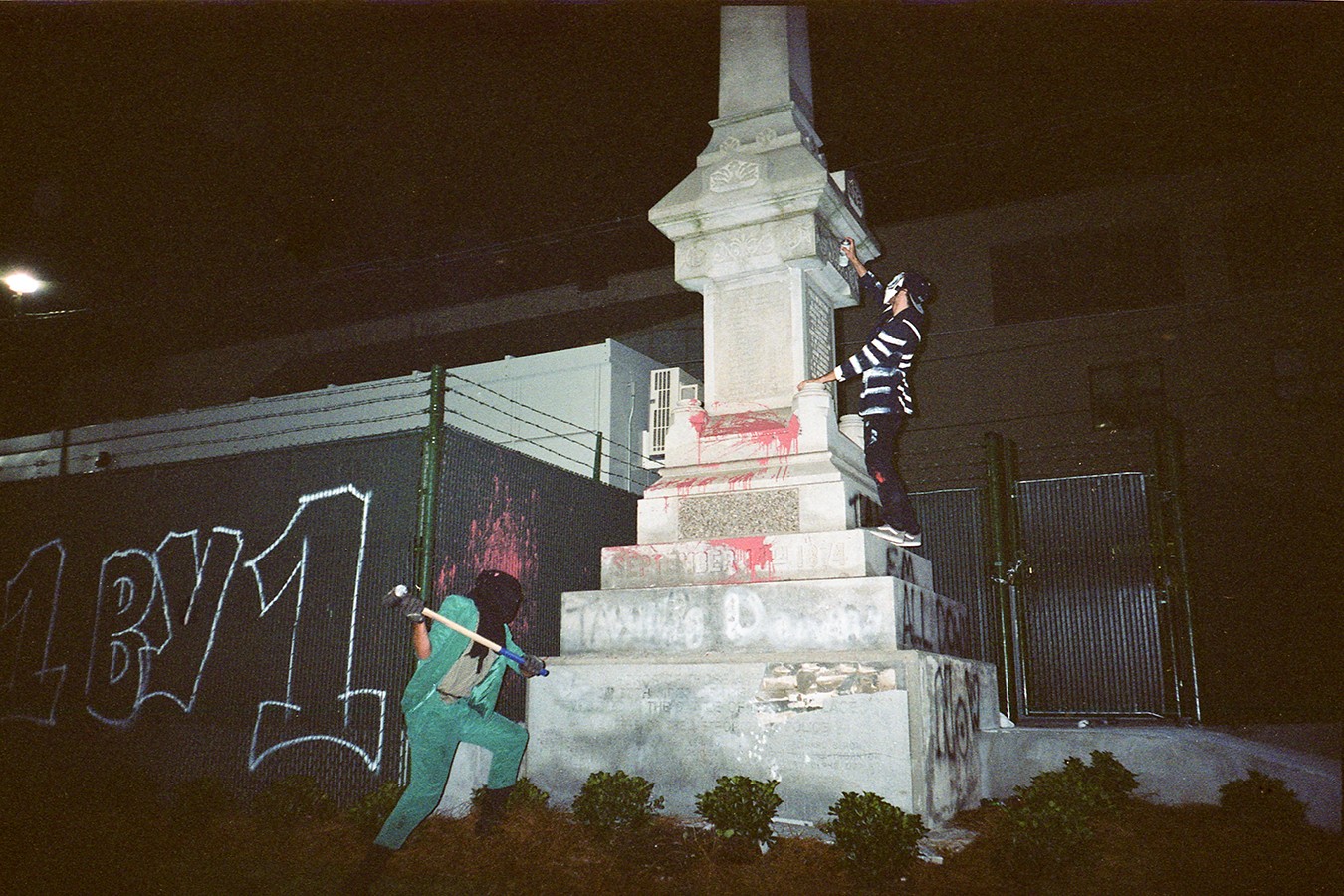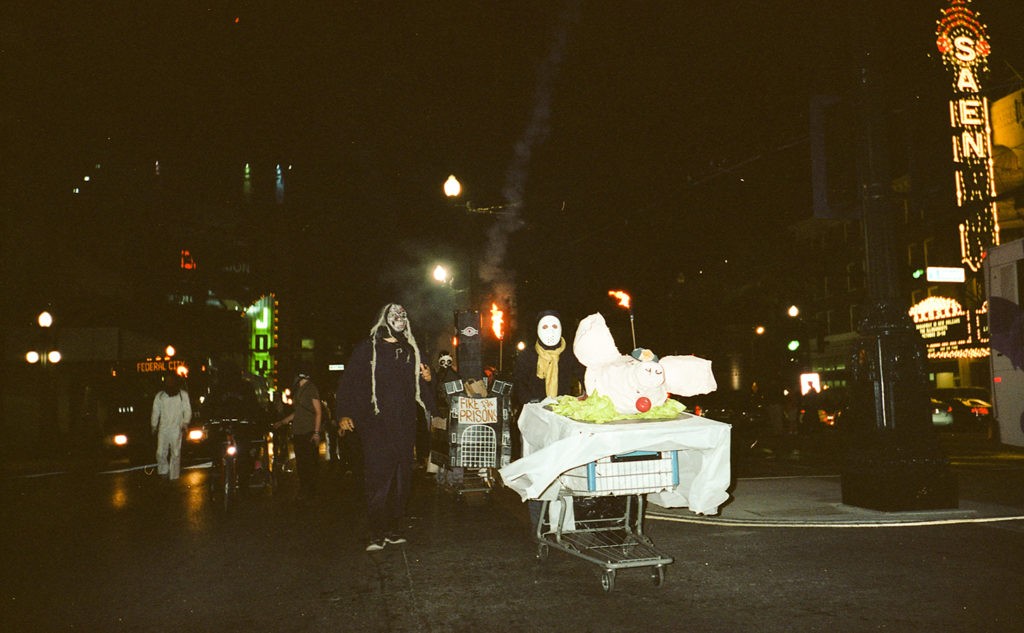For the last three years on October 30st, the streets of New Orleans have been lit by the torches, fireworks and burning barricades of paraders on Mischief Night, a holiday of rebellious revelry the night before Halloween. This year’s Mischief Night parade took hold of Canal Street, downtown’s main thoroughfare, for ten blocks before reaching its destination, the white supremacist Battle of Liberty Place Monument.
Ancient pagan earth rituals, peasants conspiring against rulers around the bonfires of the Sabbat, workers concealing their identities to steal back from the bosses… the history of Halloween is rich with traditions that have historically functioned as protection and power against the enemies of the living. Now, as the forces of Halloween reawaken from the long sleep of consumerism and recuperation, how they’ll adapt to the uniquely grim times ahead remains to be seen.
For example: how will one of New Orleans’ great cultural forms, the rejuvenatory celebratory procession, support our embattled spirits as we‘re obligated to choose sides in the divisions ensuing from chaotic weather, receding shorelines, police brutality and the resurgence of white supremacy?

Will we parade like Day of the Dead did this year, in a compliant straight line cordoned off on all sides by police escorts, while denying ourselves the power to fight for the living? The old argument, that beautiful fatalism is just how we do things in the Big Easy, has been thoroughly discredited: even at the time these pallid paraders were marching to the End of the World, students at Dillard were battling the cops protecting neo-Nazi David Duke’s “right” to speak at an historically black college.
There is no more disavowing what the forces of death are up to. It’s a reality that even the most self-obsessed rituals can and must confront— we must attack the forces of oppression directly or else become merely the appealing backdrop against which the enemy celebrates themselves, the very “cultural currency” with which our city is pimped. There is no longer a middle ground; that’s been seized for luxury condos. The choice is stark: we either collectively build a more combative spiritual practice or we collude in ceding our ritual spaces of encounter to the oppressors.
No matter how many veils of pretty lace you drape over your pretty face, you can’t help but see and know that the subdued bread and circus culture of New Orleans is being crushed. Today, all non-confrontational aesthetic spectacle serves to reinforce this exploitation. Time has run out.
Let’s not be demoralized by the crisis, though. Let’s instead let urgency give new life to our holidays, to our memorials, to the carnivalesque — a life that knows how to fight as much as it knows how to live.

For the iconoclasts and the water protectors
All power to the parades










